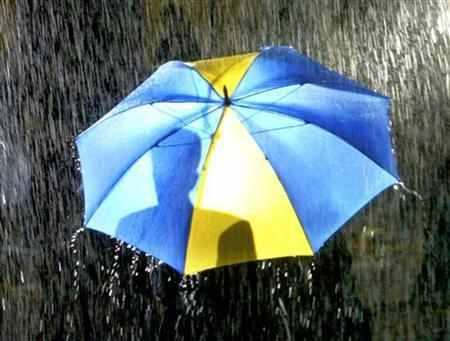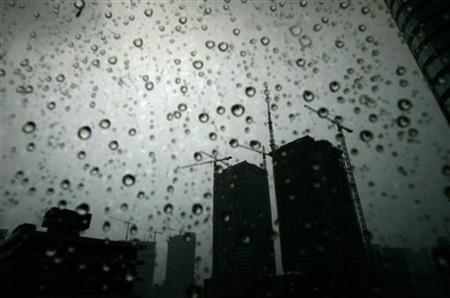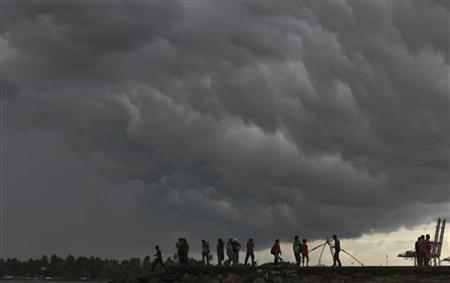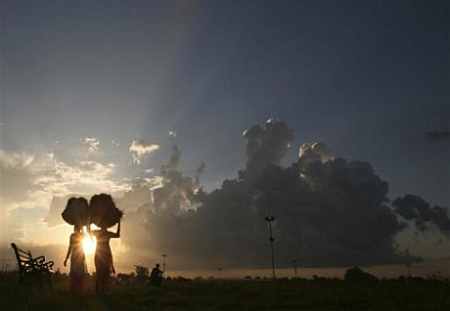Photographs: Russell Boyce/Reuters Malini Bhupta in Mumbai
In the first 20 days of June, cumulative rains have been 26 per cent below normal. Deficient rainfall is the last thing India needs at this point in time, as it would not only hit economic growth but also private consumption.
Though the weather department expects rainfall at 98 per cent of the long-period average in July and 96 per cent in August, fears of an El Nino are building.
The Southern Oscillation Index (SOI), which signals any abnormal warming of ocean surfaces that result in El Nino conditions, had been in the negative zone in April and May.
...
Economy doesn't seem water-proof, yet
Photographs: Carlos Barria/Reuters
If SOI is in the red, then chances of El Nino conditions increase, which implies lower rainfall. If SOI goes into a negative zone (closer to -8), chances of an El Nino again increase.
Though SOI has remained neutral in June, it did go into the negative zone in April and May.
The southwest monsoons are still critical for India's kharif crop as only 36 per cent of the country's arable land is irrigated, while the rest is rain-fed.
...
Economy doesn't seem water-proof, yet
Photographs: B Mathur/Reuters
The kharif crop accounts for 50 per cent of India's agricultural output, so deficient rains in June are a cause of concern.
Though agriculture's share in the gross domestic product (GDP) is down to 14 per cent now from 26 per cent in 2000, poor rains tend to have a cascading effect on inflation, economic growth and private consumption.
If rains are below normal this year, economists believe it could easily shave 50-80 basis points off India's GDP.
...
Economy doesn't seem water-proof, yet
Photographs: Sivaram V/Reuters
According to Rohini Malkani of Citi, while sub-par monsoons could shave 50-80 basis points off growth to 5.6-6 per cent, the impact on inflation is difficult to quantify.
Morgan Stanley believes it's too early to say the rains will be deficient as June typically accounts for 18-19 per cent of the full season's rainfall, while July accounts for 37-38 per cent of the rainfall.
The bulk of the sowing happens in July and, therefore, a clear picture is likely to emerge only after mid-July.
...
Economy doesn't seem water-proof, yet
Photographs: Mukesh Gupta/Reuters
While poor rainfall is a risk to GDP and inflation, analysts are also looking at the potential impact a poor kharif crop could have on private consumption.
According to analysts, on three earlier occasions when rainfall had been deficient over the last one decade, a host of rural/agri plays have underperformed.
Any shortfall in rains will result in a further deceleration in consumption, which has not been factored in yet. As a result, several brokerages are underweight on expensive consumer staples.







article